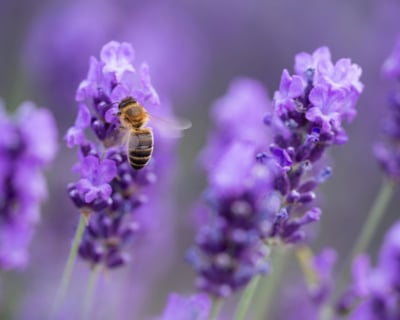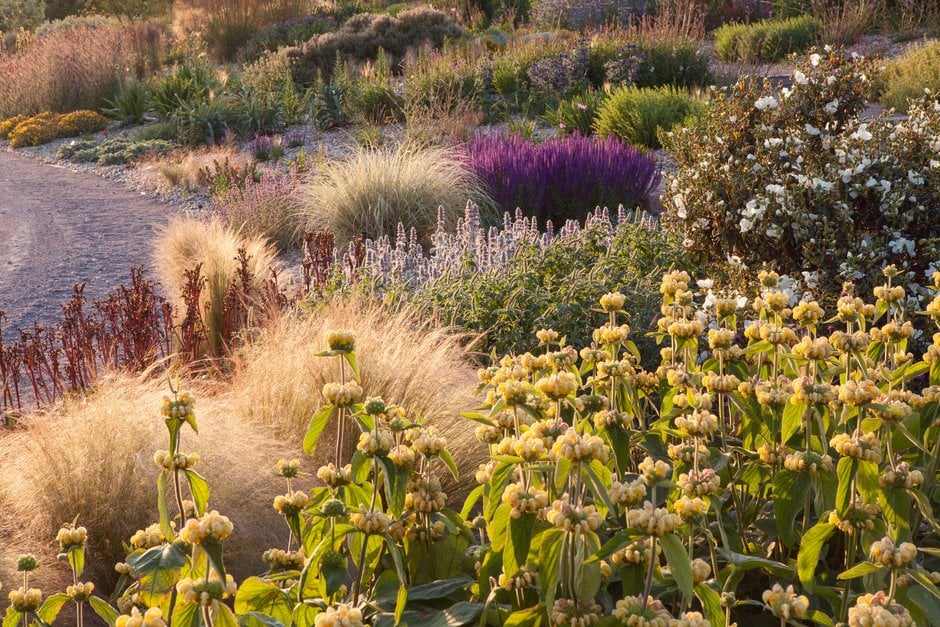10 award-winning (AGM) drought-tolerant plants
As our summers get drier and water becomes ever more precious, drought-tolerant plants are becoming increasingly important in many gardens. Here’s a selection of 10 star performers
There are plants which grow naturally in dry situations, and many of them are not only beautiful but easy to grow too. Take a look at these RHS Award of Garden Merit (AGM) plants we’ve highlighted here and select a few for your garden.
Cistus × pulverulentus ‘Sunset’ this colourful cistus (or rock rose) is high on the list of drought-tolerant evergreens. Selection ‘Sunset’ is one of the best and also one of easiest to find at nurseries and garden centres. Tending to spread with slightly grey-green wavy leaves, the magenta-tinted flowers have a cluster of golden anthers in the centre. 60cm (2ft). Hardiness rating H4.
Yucca filamentosa ‘Color Guard’ forms a stemless, evergreen rosette and features slender foliage with a broad yellow central stripe running the length of each leaf. The result is dramatic and enhanced by a tower of large white bell-shaped flowers in July and August. It is good to plant on dry slopes, given full sun. Rosette length 75cm (30in), flower spike length 1.5m (5ft). Hardiness rating H5.
Fremontodendron ‘California Glory’ is derived from a cross between a Californian and a Mexican species. It is the classic evergreen for a sunny south-facing wall and known for its ability to cope with dry soil in such a difficult position. Its flamboyant 6cm (2½in) yellow flowers often open from May until October. Plants can be cut back in spring to control their size. 3m (10ft). Hardiness rating H4.
Cistus sahucii is a hybrid, this time between two noticeably drought resistant Mediterranean shrubs, Cistus and Halimium. It was discovered growing wild in France almost 100 years ago; the result is a low, unexpectedly hardy, narrow-leaved, spreading evergreen with a long succession of golden-centred, pure white flowers from May to September. 50cm (20in). Hardiness rating H4.
Helichrysum petiolare ‘Limelight’ is an invaluable plant for its drought tolerance. Mostly used in containers, its spreading habit and soft chartreuse foliage gives it big appeal. Needs dry conditions to get through the winter: under an overhanging south-facing bay window is ideal. 45cm (18in). Hardiness rating H3.
Lupinus arboreus is originally from the Californian sand dunes – so it can certainly cope with dry soil. This broad, mound-forming evergreen features neatly lobed leaves which make an attractive backdrop for the 25cm (10in) spikes of fragrant, two-tone yellow flowers. Though short-lived, this plant usually self-sows, especially in gravel, for on-going displays. 1m (3ft). Hardiness rating H4.
Salvia ‘Blue Spire’ has upright stems lined with prettily divided silvery foliage. The numerous plumes of violet-blue flowers which open from August onwards and the plant’s ability to grow in a range of dry soils without complaint explain its popularity. It’s also a good cut flower – and of course it takes drought in its stride. 1.2m (4ft). Hardiness rating H5.
Spartium junceum (Spanish broom) bears many fragrant, bright yellow flowers from August into autumn. Though deciduous, its bright green stems give it an unexpectedly colourful winter look. Thrives in poor conditions; in fact the best-looking specimens are usually in dry, exposed situations. 2m (6½ft). Hardiness rating H5.
Lavandula angustifolia Miss Muffet (‘Scholmis’) is reliable, neat and compact, with narrow greyish-green leaves. The impressively prolific spikes of violet-blue flowers sit low over the foliage in summer. This English lavender makes fine low edging that has a powerful aroma. 30cm (12in). Hardiness rating H5.
Ulex europaeus ‘Flore Pleno’ is a fine choice of gorse. They say ‘kissing’s out of season when gorse is out of bloom’. Yes, it flowers in just about every month of the year, with its main display in spring, but the rich yellow flowers of this form are double – so each lasts longer than usual to enhance the display. Grow in

